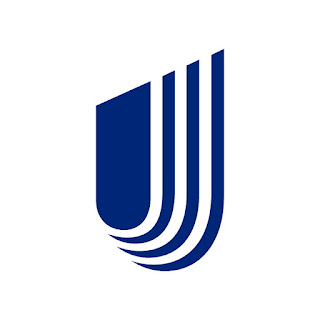Marram Health Center | Partners | NWI.Life


publication date: May. 31, 2019
A public health initiative aimed at preventing cervical cancer in at-risk Appalachian families from Ohio, Kentucky, Virginia, and West Virginia is underway with support from an $11 million NCI grant to Ohio State University Comprehensive Cancer Center–Arthur G. James Cancer Hospital and Richard J. Solove Research Institute.
The OSUCCC–James is collaborating with 10 health systems throughout Appalachian Ohio, Kentucky, Virginia, and West Virginia to conduct this research, in partnership with the University of Kentucky, West Virginia University, and the University of Virginia.
Led by Electra Paskett, leader of the OSUCCC–James Cancer Control Research Program, this initiative builds on a history of collaborative research and community partnerships.
The effort will focus on reducing the burden of cervical cancer in at-risk Appalachian communities by specifically targeting the primary causes of cervical cancer: tobacco smoking, human papillomavirus infection, and lack of cervical cancer screening.
The project will implement and test the effectiveness of an integrated cervical cancer prevention program consisting of three interventions: nicotine replacement therapy and smoking cessation counseling services, a method of at-home HPV screening, and a medical practice-based intervention to improve HPV vaccination rates among patients age 11—26 years of age in Appalachia-based health centers.
“This region has one of the highest rates of cervical cancer and cervical cancer deaths in the United States. We know that smoking tobacco products, HPV infection, and lack of timely cervical cancer screening play a significant role in these exceptionally high rates,” Paskett, the Marion N. Rowley professor at Ohio State University College of Medicine and College of Public Health, said in a statement.
“In the Appalachian area of the United States, vaccination rates are still far below the national average, and studies have shown the HPV vaccine is effective for not only reducing rates of cervical cancer but also other forms of HPV-linked cancers that are on the rise,” said Paskett.
“These health disparities in underserved communities are not new—they are long-standing and must be addressed in a systematic, sustainable way. We hope to do just that through the type of intentional community collaboration established in this study.”
ACS receives $1.99M grant for sub-Saharan African patient navigation initiative
The American Cancer Society has been awarded a $1.99 million, five-year grant to improve support and access to care for people living with cancer in low-and-middle-income countries, particularly sub-Saharan Africa. This funding will help ACS expand patient navigation to countries with a growing burden of cancer.
The grant was awarded by the Merck Foundation.
More than 70% of the nine million cancer-related deaths worldwide are in resource-limited settings, where patients face many barriers to timely diagnosis and high-quality cancer care.
With support from the foundation, ACS will fortify its patient navigation program in Kenyatta National Hospital, a national referral hospital in Kenya, and adapt it for The Uganda Cancer Institute, a high need facility in Uganda which serves about 200 patients daily.
This grant is a first step toward expansion of patient navigation programs. As part of this, ACS said it will create a comprehensive guide and toolkit to develop and implement patient navigation programs, designed specifically for health facilities in low- and middle-income countries.
“Uganda has a population of 43 million, but there are only 20 oncologists in the entire country,” Jackson Orem, executive director of the Uganda Cancer Institute, said in a statement. “That’s one of the reasons why patient navigators are so important in helping patients manage the day-to-day challenges that prevent them from receiving care and empowering them to seek treatment and stay in care.”
ACS will work with the Rollins School of Public Health at Emory University to evaluate the implementation of the patient navigation programs in Kenya and Uganda as well as the pilot of the program design guide and implementation toolkit.
Seewaldt and Buermeyer awarded grand prize from the Global Challenge to Prevent Breast Cancer
The Global Challenge to Prevent Breast Cancer has awarded:
The Grand Prize (Researcher Category) to Victoria Seewaldt, professor and chair of Population Sciences at City of Hope, who, with Chris Sistrunk of the SoCAL STEM and Community Outread Team, proposed STEM education to help prevent breast cancer.
The Grand Prize (Advocate Category) to Nancy Buermeyer, senior policy strategist at Breast Cancer Prevention Partners, who, with co-author Janet Nudelman, advocates reducing emissions at major ports to lower breast cancer risk.
In addition to the two Grand Prize winners chosen by a judging committee of experts and advocates, those in attendance and watching online also had their say, voting on an Audience Choice Award. The winner, Michele Atlan, vice president at the Breast Cancer Care and Research Fund, proposed a novel way to repackage natural ingredients to aid prevention efforts.
Started by the California Breast Cancer Research Program last fall, the Global Challenge was designed to uncover transformative prevention research ideas, and address the staggering statistic that, despite treatment advancements, people continue to be diagnosed with breast cancer at rates that have remained essentially unchanged over the past three decades.
Finalists were selected from dozens of applications that were submitted to the Global Challenge and competed at the Idea Showcase and Competition in San Francisco.
The ideas presented at the Global Challenge Idea Showcase and Competition will inform more than $15 million in funding that CBCRP will devote to breast cancer prevention research over the next five years.
Comments
Post a Comment